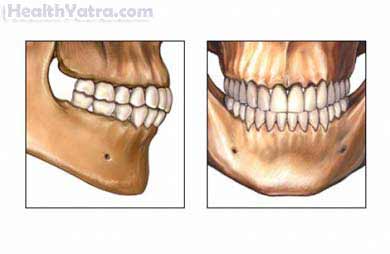Definition
Bruxism is chronic, involuntary grinding or clenching of teeth. It usually occurs during sleep, but it may also occur while awake.

Causes
The exact cause of bruxism is unknown, but it is believed to be related to:
- Stress and anxiety
- Abnormal alignment of the teeth or jaws
Risk Factors
Risk factors that increases your chance of getting bruxism include:
- Chronic stress or anxiety
- Aggressive or competitive personality
- Abuse of drugs or alcohol (especially methamphetamines)
- Post-traumatic stress disorder
- Age: 40 or younger; especially common in women aged 27-40
- Family member with bruxism
- Facial or oral trauma
- Use of psychiatric medications, especially antidepressants
- Prior serious head injury
Symptoms
Symptoms may include:
- Grinding sounds during sleep
- Teeth that are sensitive to heat, cold, or brushing
- Tense facial or jaw muscles
- Hairline cracks of the enamel on some teeth
- Sore teeth
- Inflammation of the gums ( gingivitis)
- Headache, especially when waking in the morning
- Damage to the inside of the cheek (from biting or chewing)
- Temporomandibular joint disorder (TMD)
Diagnosis
The doctor or dentist will ask about your symptoms and medical history. An examination of your teeth and jaw will be done. With bruxism, teeth will have flattened tips, excessive wear, or thin enamel.
Treatment
Methods of treatment include:
Behavioral or Cognitive Treatment
This method focuses on changing behavior through various techniques, such as:
- Biofeedback
- Stress management
- Relaxation therapy or exercises
Orthodontic Treatment
Your dentist may recommend a protective mouth appliance, such as a night guard. It can absorb the pressure of constant night grinding.
Medication
Medication is only recommended for short-term use. Medications may include:
- Muscle relaxants
- Mild sleeping aids
- Injection of botulinum toxin (Botox) in severe cases
Bruxism that is not treated may result in gum damage, tooth loss, and jaw-related disorders.
Prevention
The same methods used to treat bruxism can be used to prevent the condition.
